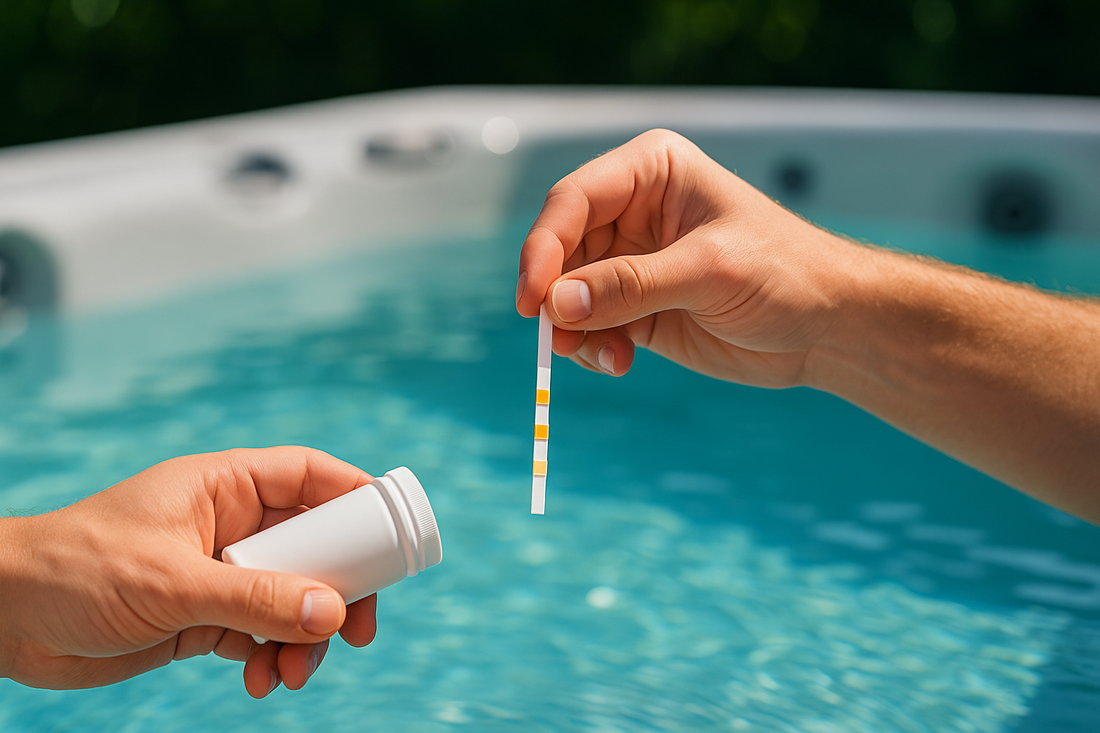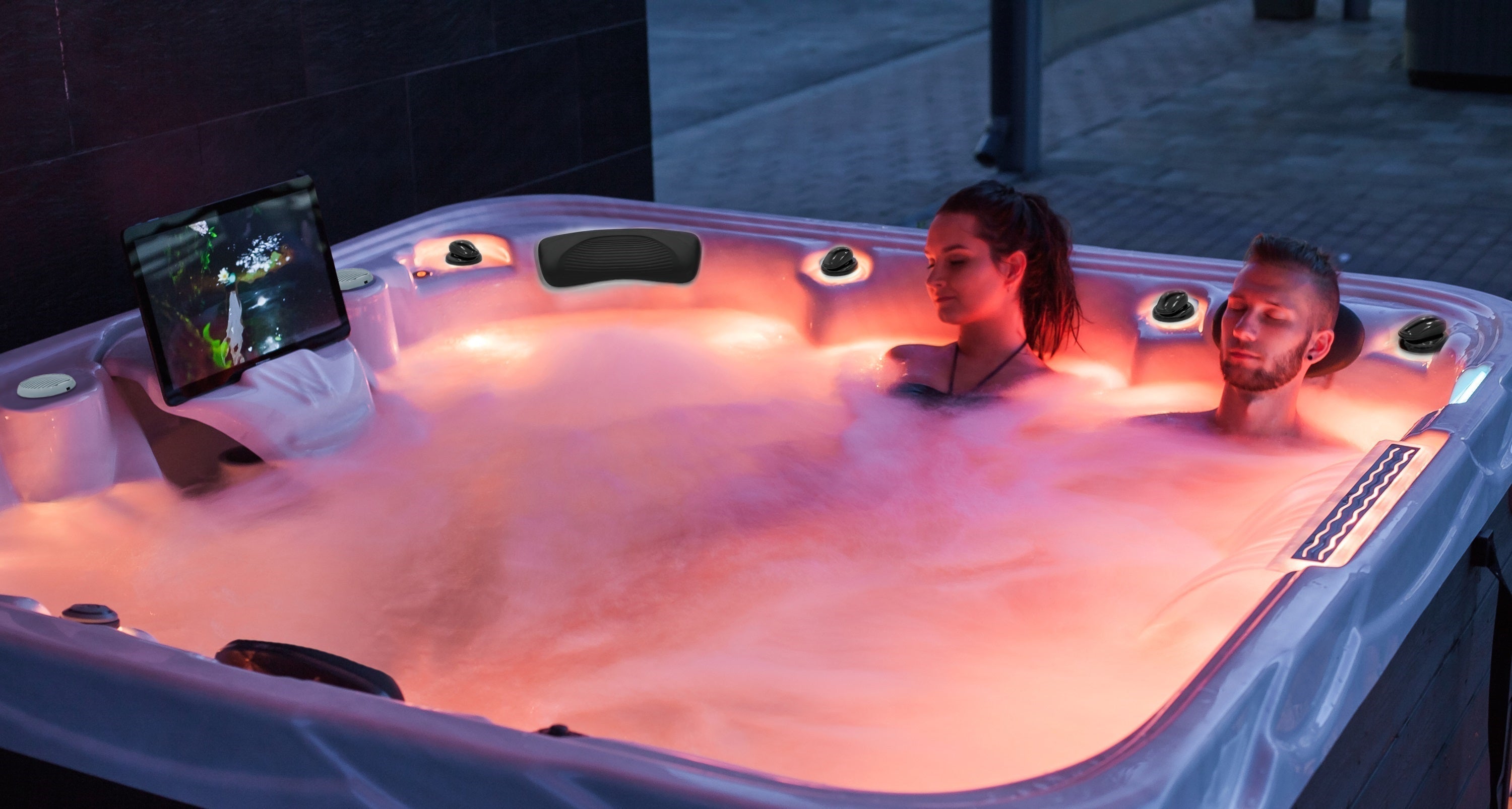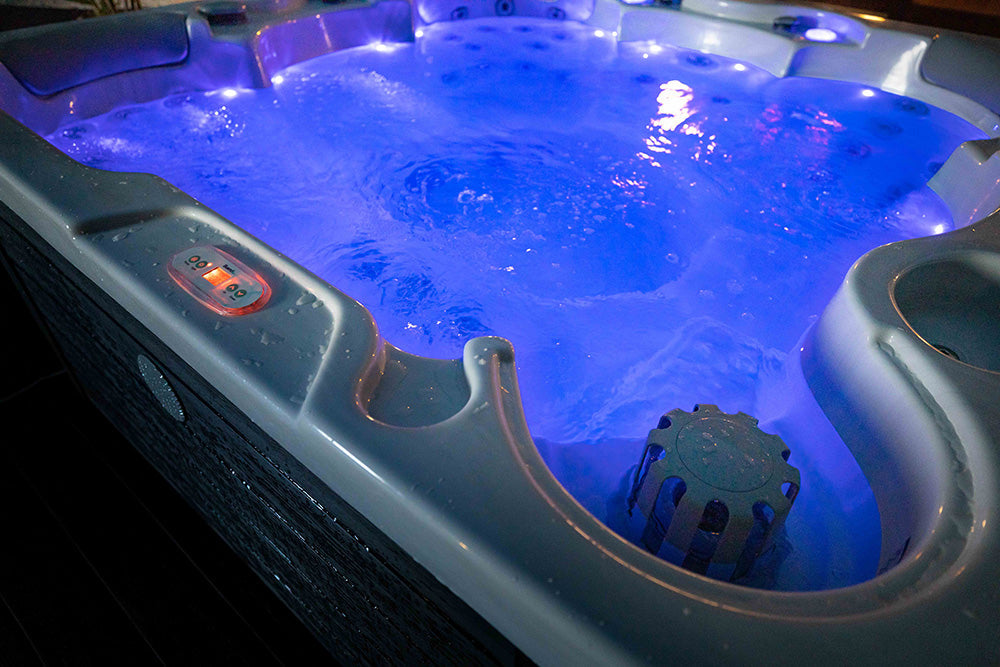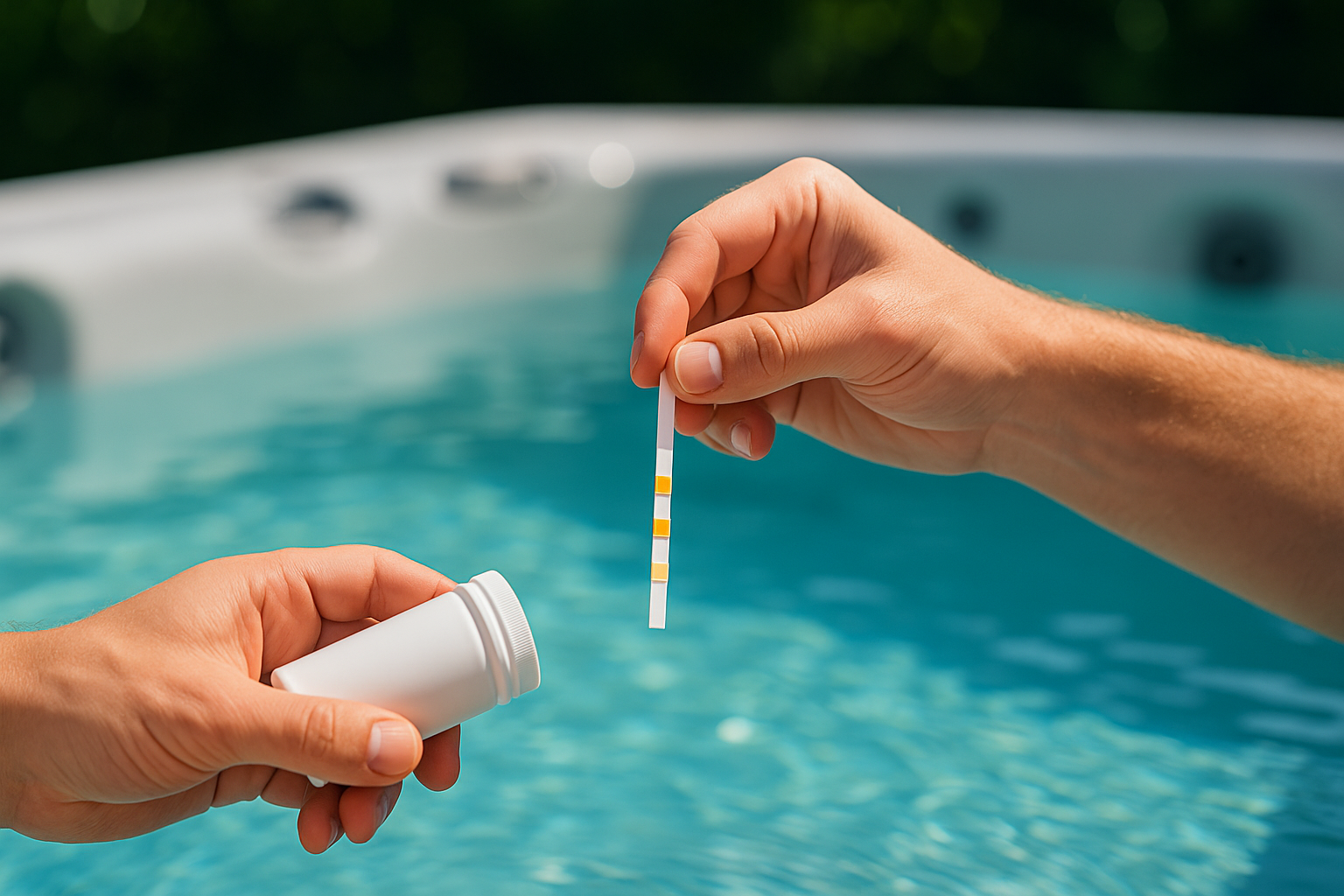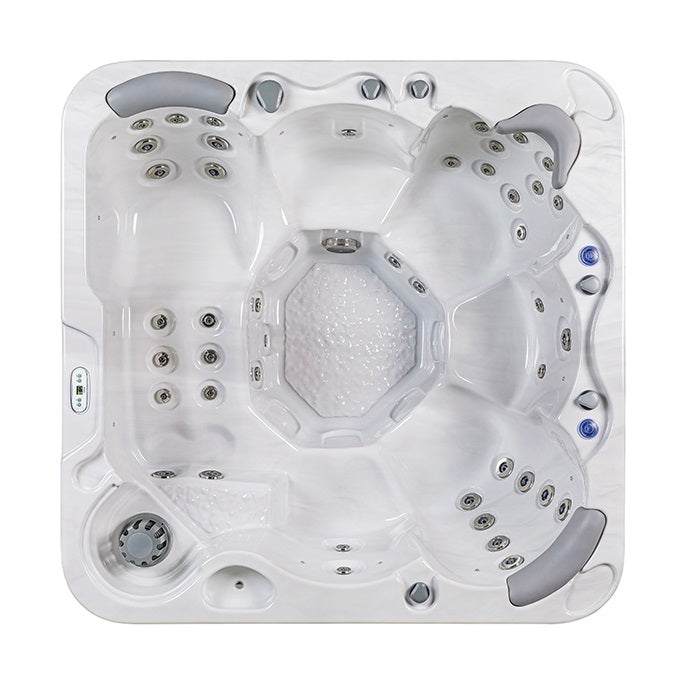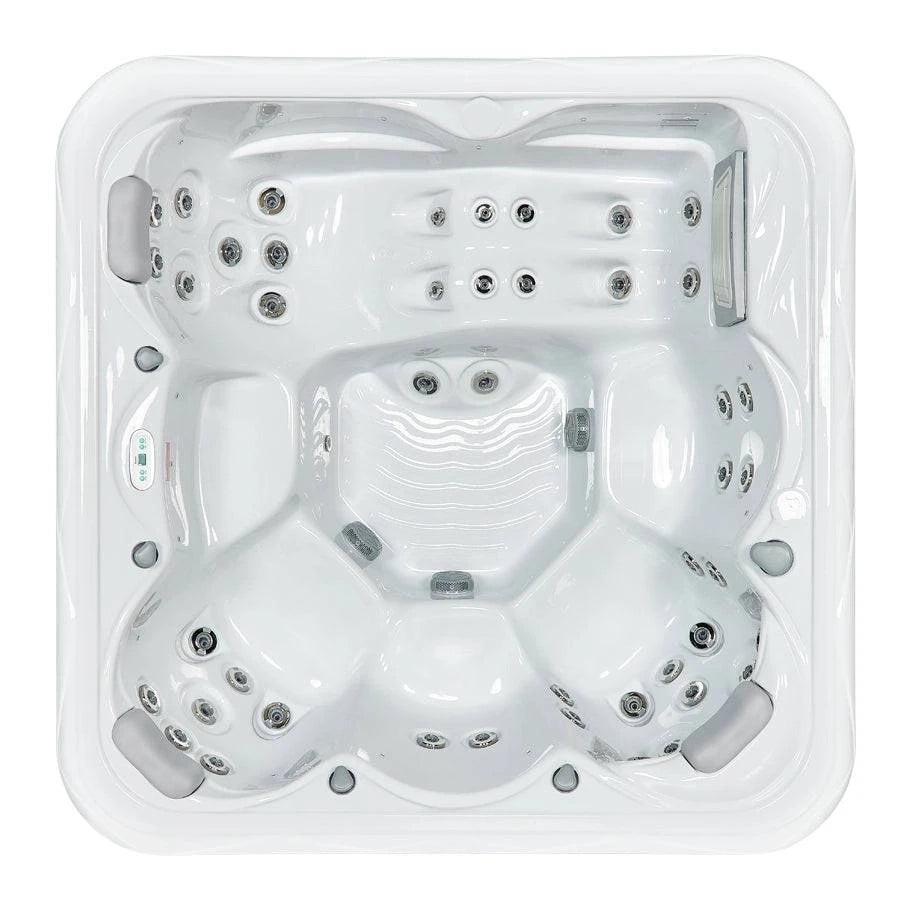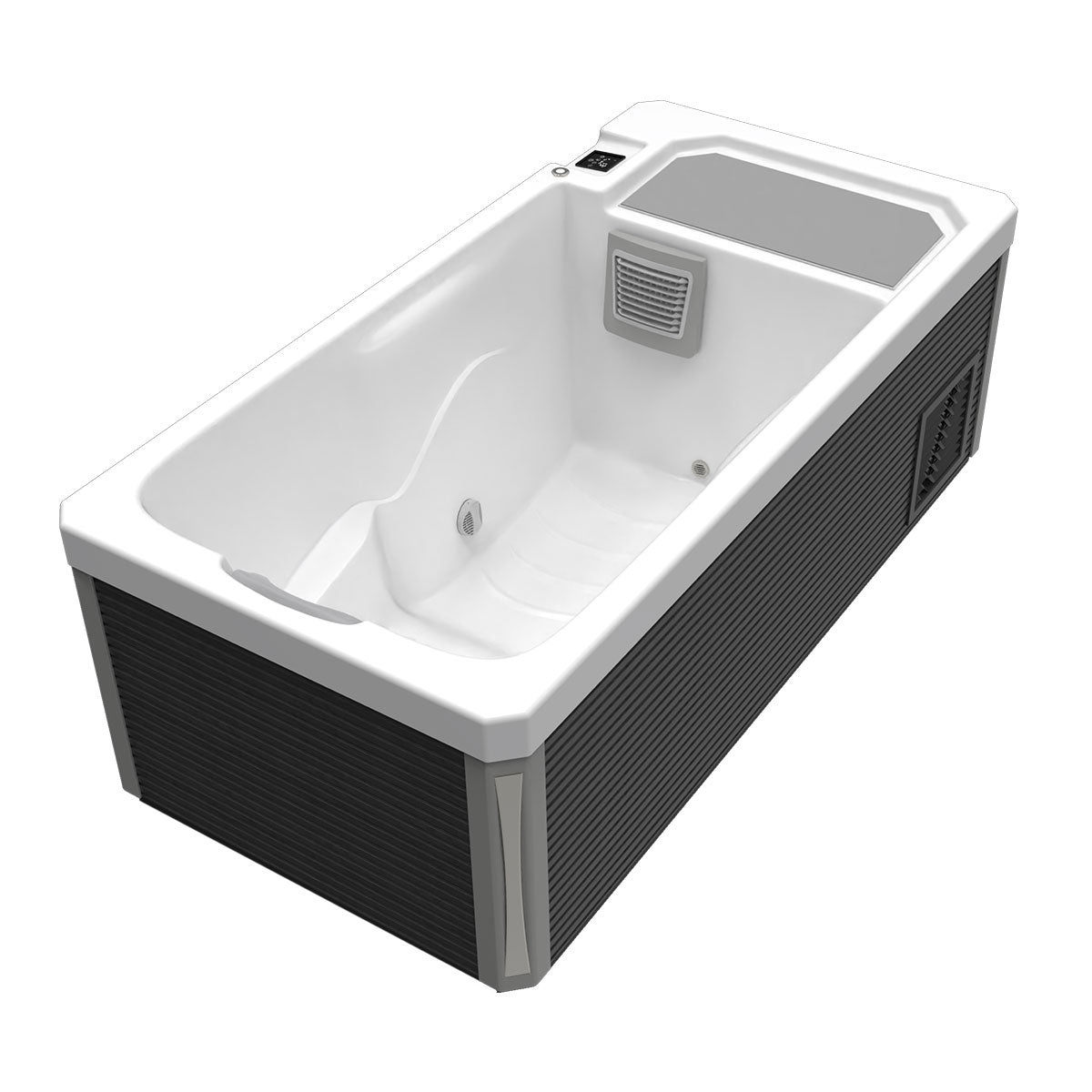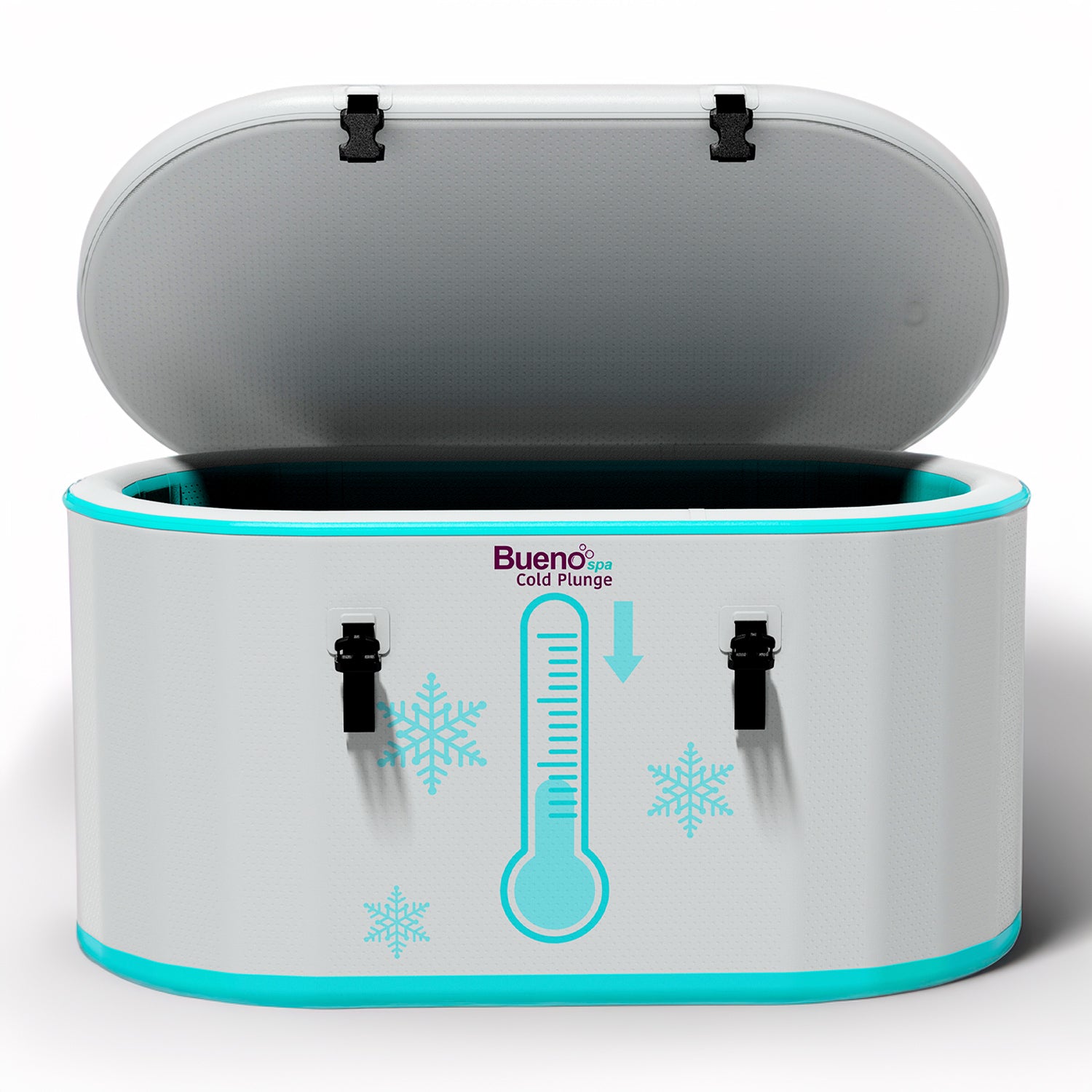Water quality: It’s a top concern for responsible hot tub owners. You want your tub to be clean and safe, which means taking a little time to do proper tub maintenance. A critical maintenance task is ensuring the water has just the right amount of chemicals in it and that these chemicals don’t make the water too acid or too alkaline. Unfortunately, if your hot tub’s alkalinity levels get too high, you can get problems like cloudy water, algae, and even damage.
Read on to learn all about high alkalinity in hot tubs and how to get your water quality just right.
What Is Alkalinity in a Hot Tub and Why Does It Matter?
Alkalinity is just one water quality measure you should monitor, but it’s a really important one. Let’s take a look at why alkalinity matters and how to decrease alkalinity in hot tubs when needed.
Understanding Alkalinity vs. pH
The pH level is always measured on a scale of 0-14 and shows how acidic or alkaline something is - you probably remember that from high school science. Total alkalinity (TA) is a related but slightly different aspect of water quality. TA is measured in parts per million (ppm) and shows the water's ability to neutralize acids. You might find it helpful to think of alkalinity as a buffer to keep pH levels stable.
Why Alkalinity Matters for Hot Tubs
Experts recommend a hot tub alkalinity level of between 80 and 120 ppm. Keeping alkalinity at an optimal level like this should prevent rapid pH changes and keep the water chemistry stable. When you lower hot tub alkalinity too much or too quickly, the pH can fluctuate - making it challenging to maintain good water quality.
On the other end of the scale, high alkalinity in hot tub pools makes it challenging to tweak the pH level of the water. This may lead to scale buildup in the tub, cloudy water, or increased algae growth.
Use the right hot tub chemicals to reduce alkalinity in spa water and keep your hot tub water safe and comfortable.
Why Is High Alkalinity a Problem?
While alkalinity is an important factor for safe, healthy hot tub water, alkalinity that’s too high can cause problems. Balancing hot tub water chemistry becomes increasingly difficult, leading to potential damage and an unpleasant hot tub experience.
The Effects of High Alkalinity on Water Quality
When the alkalinity level rises above 120 ppm you can end up with stubbornly high pH levels. You may find that your hot tub water won’t respond to water-balancing chemicals. Symptoms of this include cloudy, murky water that’s unpleasant to bathe in.
Scale Buildup on Hot Tub Surfaces and Equipment
Mineral deposits are another result of high alkalinity. The result? Scale that builds up on the shell of the hot tub, the filters, and even the jets, affecting your hot tub’s performance.
Impact on Health and Comfort
If you can’t fix pH in hot tub pools, one of the most instantly noticeable impacts of high alkalinity is how it can affect your skin. Dryness and irritation are common signs that alkalinity is high. You may also notice that your eyes are redder than usual or itchy.
The Cost of Neglecting Alkalinity Issues
If left unchecked, high alkalinity can corrode and permanently damage jets, pumps, and piping. With hot tub repairs costing as much as $900, monitoring and adjusting the alkalinity could save you a whole lot of money in the long run. Replacing accessories for a hot tub can also be costly. Check your alkalinity levels regularly to minimize the risk of damage.
Pro Tips for Maintaining Alkalinity and pH Balance in Your Hot Tub
So, how do you lower alkalinity in a hot tub without professional help? Thankfully, it’s pretty simple to keep on top of your alkalinity levels. Follow these spa water maintenance tips to keep your hot tub in prime condition.
Regular Testing and Monitoring
Utilize reliable water testing kits or invest in a digital meter to keep track of your water’s pH and alkalinity levels. Don’t just test it and forget it - keep a log of the results so you can understand any changes and address issues early.
Adjusting Alkalinity and pH Gradually
Hot tub water care treatments are essential. But adjusting the water’s alkalinity and pH should be a gradual process. Always adjust the alkalinity first and then tweak the pH. Use dry acid or pH decreasers in small increments to adjust alkalinity safely and accurately.
Use High-Quality Chemicals
Don’t cut corners by buying cheap, untested chemicals. Invest in premium hot tub chemicals designed specifically for hot tubs - these will be the most effective and safe.
Maintain Proper Circulation
Always run the circulation system after you add new chemicals to your hot tub. This ensures that they’re distributed evenly through the water. You should also clean or replace your filters regularly to keep your hot tub running at optimal performance.
Balance Alkalinity and pH Together
Both alkalinity and pH are critical measures for safe hot tub water. Check that your alkalinity is between 80 and 120 ppm but don’t forget that the pH level should read between 7.2 and 7.8. Stabilizing the tub’s alkalinity levels could prevent cloudy water, scale, and even skin irritation.
FAQs About Decreasing Hot Tub Alkalinity
How long does it take to lower alkalinity in a hot tub?
It depends on the starting levels and how big your hot tub is. With the right chemicals, you should be able to bring alkalinity levels down within 24 hours - just remember to test again after treating the water.
Can I use household products to adjust alkalinity?
Some people use products like vinegar and baking soda to adjust the alkalinity of their hot tub water - vinegar is acidic and, in theory, should reduce the pH of the water. However, household products can leave unpleasant residues, making it smarter to stick with spa-grade chemicals for precision and safety.
What happens if alkalinity is too low after adjustment?
Low alkalinity can cause pH to fluctuate unpredictably, potentially leading to equipment corrosion and discomfort for bathers. You can raise the level using an alkalinity increaser.
Is high alkalinity harmful to my hot tub equipment?
Yes - high alkalinity can cause scale buildup, clogging pipes and reducing heater efficiency. This can result in costly repairs or replacements.
How can I prevent alkalinity problems in the future?
Regular water testing, proper chemical use, and prompt adjustments are vital to avoid alkalinity issues. Try and follow a consistent maintenance schedule and log alkalinity levels so you can spot issues instantly.
Decrease Alkalinity in Hot Tub: Achieve Perfect Water Balance for Your Hot Tub
Keeping the alkalinity of your hot tub water at a safe and comfortable level is a critical part of hot tub maintenance. Invest in spa-grade chemicals and monitor your water quality to optimize your time spent in the hot tub.
Looking for the best hot tub care solutions? Explore our premium products at BuenoSpa and elevate your spa experience!


 (888) TO - BUENO
(888) TO - BUENO
